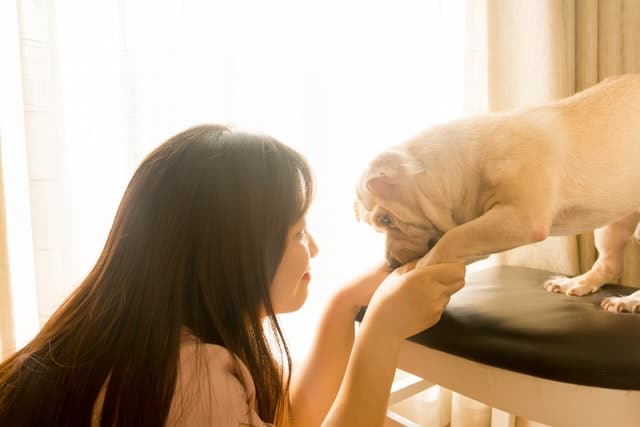
Why are cats and dogs spoken with the same sweet, sing-song voice that is used with babies? The reasons are very simple. And it is that people who share their lives with dogs and cats love them so much that they even consider them part of their family. But there is more. Science has shown that this higher, more positive voice gets four-legged friends to pay more attention to their humans. This article reveals how cats and dogs are spoken to, why high-pitched tones capture their attention, and how the voice is a way of telling these animals how much you love them .
We talk to cats and dogs like babies
Surely more than one of these scenes are familiar to you: “Hey, friend”, “Who is the most beautiful dog in the world?”, “How is my precious kitten?” … Many people really love them cats and dogs with whom they share life, so much so that they are part of their family, even for some it becomes their “furry children”. Also, they get happy when they are around them.
“The way of speaking that we use with babies and with animals we love resembles in a striking way: we use a higher intonation, loaded with affection, as well as an exaggerated prolongation of certain syllables“, says the psychologist Christine Kitamura , who has coordinated a research that investigates this way of communication with animals and that has been published in the journal Science .
This way of intoning, called baby talk (talks with babies) when it is directed towards small children and pet talk (talks with pets) when it is done with beloved dogs or felines, is very different, however, from that used with adult people. “It is evident that the interlocutors are sensitive to the audience with which we communicate , as well as to the emotional needs that we attribute to them,” adds the psychologist.
Why do we talk to cats and dogs like babies?
For their owners, cats and dogs are the best of friends: they love them, take care of them, laugh with them, share games and take endless naps together on the sofa. Therefore, it makes sense that we have developed our own way of speaking to them, despite the obvious fact that animals cannot answer us in words. We do it in a way that is very similar to the tone of voice that parents use to talk to their young children.
Well, this “happy and positive” way of speaking, slower, more lively, with a marked high voice, very pronounced vowels, short pronunciations, reduced complexity and with notable repetition of words is used both with young children and with animals with those who live. And yet it is not used when talking to adults.
Cats and dogs pay attention to the high-pitched voice
In addition, scientists have found that dogs, both adults and puppies, pay more attention when people speak to them with that voice. ” Neither animals nor babies have a verbal language, so it makes sense that our way of speaking to them with an exaggerated intonation of certain vowels has the objective of trying to communicate better with them; but, in addition, that way of speaking achieves get their attention “.
Researchers believe that dogs and cats pay more attention to this kind of talk because the talk pet increases neuronal processes involved, which are the routes used by the brain to process stimuli. The same thing happens with babies.
And there is more. Scientists believe that this way of talking may be used with these animals because humans learn that this sweeter, higher voice helps create and maintain emotional bonds .






